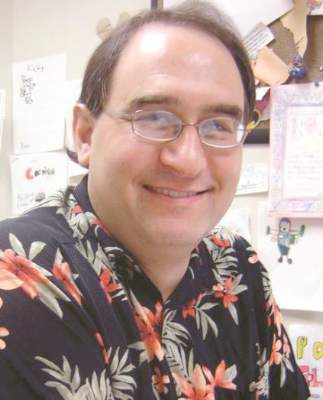User login
It’s not uncommon to read about neurologists of yore and be stunned, if not horrified, to think of what they had to work with.
Going back perhaps 100 years, it wasn’t uncommon for anyone with a head injury and hemiparesis to have one (or more) burr holes placed in hope of draining a subdural hematoma causing the symptoms.
In more recent memory was the dreaded ventriculogram, or pneumoencephalogram: A painful procedure in which a lumbar puncture was done in order to blow air bubbles into the spinal fluid, then use skull X-rays to watch them outline the ventricles and other structures to look for midline shift.
I remember one of my old teachers (RIP, Al) recalling that imaging in his younger era consisted of a cerebral angiogram to look for displaced vessels and an EEG for focal slowing.
The CT scan obviously changed all that, with its excellent noninvasive imaging of the brain, and the MRI made things even better by several orders of magnitude.
But where are we now? As frightening as the practices of 50-100 years ago may seem now, we have to keep in mind that, to the doctors using them, they were at the cutting edge of medical technology. They weren’t saying “this would be so much easier if the MRI had been invented.”
None of us can clearly see what the next big advances will be. We use what we have, knowing it’s the best we can do. As the leading philosopher of our era (Yogi Berra) said, “It’s tough to make predictions, especially about the future.”
So what will future doctors think of us? What tests will they look at and shudder, asking, “They actually DID that to people?”
I’m sure the CT-myelogram will be one of them. It is perhaps the last descendant of the pneumoencephalogram still in use; it’s done uncommonly, but still has value. For those who can’t have an MRI or where confirmation of an MRI is needed, it’s quite accurate.
What other tests will be considered archaic? The EMG/NCV [electromyogram and nerve conduction studies]? Lumbar puncture? Cerebral angiogram?
Of course, these are just in neurology. Every field is going to have a past test that today is looked upon with horror, and the knowledge that someday another generation will look at us the same way.
Like all scientific disciplines, what we do is based on the foundation laid by those before us, and it’s up to the next generation to push the horizon further back.
Dr. Block has a solo neurology practice in Scottsdale, Ariz.
It’s not uncommon to read about neurologists of yore and be stunned, if not horrified, to think of what they had to work with.
Going back perhaps 100 years, it wasn’t uncommon for anyone with a head injury and hemiparesis to have one (or more) burr holes placed in hope of draining a subdural hematoma causing the symptoms.
In more recent memory was the dreaded ventriculogram, or pneumoencephalogram: A painful procedure in which a lumbar puncture was done in order to blow air bubbles into the spinal fluid, then use skull X-rays to watch them outline the ventricles and other structures to look for midline shift.
I remember one of my old teachers (RIP, Al) recalling that imaging in his younger era consisted of a cerebral angiogram to look for displaced vessels and an EEG for focal slowing.
The CT scan obviously changed all that, with its excellent noninvasive imaging of the brain, and the MRI made things even better by several orders of magnitude.
But where are we now? As frightening as the practices of 50-100 years ago may seem now, we have to keep in mind that, to the doctors using them, they were at the cutting edge of medical technology. They weren’t saying “this would be so much easier if the MRI had been invented.”
None of us can clearly see what the next big advances will be. We use what we have, knowing it’s the best we can do. As the leading philosopher of our era (Yogi Berra) said, “It’s tough to make predictions, especially about the future.”
So what will future doctors think of us? What tests will they look at and shudder, asking, “They actually DID that to people?”
I’m sure the CT-myelogram will be one of them. It is perhaps the last descendant of the pneumoencephalogram still in use; it’s done uncommonly, but still has value. For those who can’t have an MRI or where confirmation of an MRI is needed, it’s quite accurate.
What other tests will be considered archaic? The EMG/NCV [electromyogram and nerve conduction studies]? Lumbar puncture? Cerebral angiogram?
Of course, these are just in neurology. Every field is going to have a past test that today is looked upon with horror, and the knowledge that someday another generation will look at us the same way.
Like all scientific disciplines, what we do is based on the foundation laid by those before us, and it’s up to the next generation to push the horizon further back.
Dr. Block has a solo neurology practice in Scottsdale, Ariz.
It’s not uncommon to read about neurologists of yore and be stunned, if not horrified, to think of what they had to work with.
Going back perhaps 100 years, it wasn’t uncommon for anyone with a head injury and hemiparesis to have one (or more) burr holes placed in hope of draining a subdural hematoma causing the symptoms.
In more recent memory was the dreaded ventriculogram, or pneumoencephalogram: A painful procedure in which a lumbar puncture was done in order to blow air bubbles into the spinal fluid, then use skull X-rays to watch them outline the ventricles and other structures to look for midline shift.
I remember one of my old teachers (RIP, Al) recalling that imaging in his younger era consisted of a cerebral angiogram to look for displaced vessels and an EEG for focal slowing.
The CT scan obviously changed all that, with its excellent noninvasive imaging of the brain, and the MRI made things even better by several orders of magnitude.
But where are we now? As frightening as the practices of 50-100 years ago may seem now, we have to keep in mind that, to the doctors using them, they were at the cutting edge of medical technology. They weren’t saying “this would be so much easier if the MRI had been invented.”
None of us can clearly see what the next big advances will be. We use what we have, knowing it’s the best we can do. As the leading philosopher of our era (Yogi Berra) said, “It’s tough to make predictions, especially about the future.”
So what will future doctors think of us? What tests will they look at and shudder, asking, “They actually DID that to people?”
I’m sure the CT-myelogram will be one of them. It is perhaps the last descendant of the pneumoencephalogram still in use; it’s done uncommonly, but still has value. For those who can’t have an MRI or where confirmation of an MRI is needed, it’s quite accurate.
What other tests will be considered archaic? The EMG/NCV [electromyogram and nerve conduction studies]? Lumbar puncture? Cerebral angiogram?
Of course, these are just in neurology. Every field is going to have a past test that today is looked upon with horror, and the knowledge that someday another generation will look at us the same way.
Like all scientific disciplines, what we do is based on the foundation laid by those before us, and it’s up to the next generation to push the horizon further back.
Dr. Block has a solo neurology practice in Scottsdale, Ariz.

